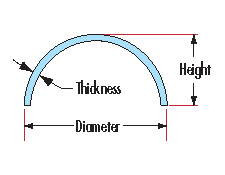The pile driver is divided into mechanical and hydraulic.
Mechanical pile driver
During the operation, the pile is placed under the pressure beam, and the pile pulley block is installed on both sides of the pressure beam. The wire rope is taken out from the hoisting machine, bypassing the guiding pulley on the top beam of the pile frame, and then bypassing the moving pulley on the pressure beam and the fixed pulley at the bottom of the pile frame, the hoisting machine is wound into the steel wire rope, and the pile pulley block is gradually tightened and passed through the pressure beam. The weight and weight of the entire pile driver are applied to the top of the pile to overcome the frictional resistance between the pile and the soil, and the pile is gradually pressed into the soil. There is a lifting pulley block on the top beam of the pile frame for hoisting the pile, and there is a gantry in the middle of the pile frame to guide the direction of the pile. Wire rope winding must be reasonable to balance the force. The two winches strive to synchronize. In order to offset the difference in traction speed, there is a balance pulley group on the top beam, and the wire ropes of the left and right pile piles are connected. On both sides of the lower part of the pile frame is a boat-shaped rail seat with rails. During operation, the rail seat is lifted and the whole machine is supported on the center base. When shifting, the rail seats on both sides move forward and the walking wheels roll on the rails. Suitable for pressing concrete piles and steel piles in clay, silt and sand.
Hydraulic pile driver
It consists of pile frame, hanging pile crane, hydraulic pile clamp, pile hydraulic cylinder and electrical equipment. The pile frame is the supporting part of the whole machine, and is equipped with a main platform, a guiding platform, a column and a lower walking trolley. The hoisting pile crane is mounted on the top of the column to hang the pile in place. During the operation, the hydraulic gripper clamps the pile head, and then the pile gripper is pushed by a pair of pile hydraulic cylinders to sink the pile. A machine is equipped with a number of hydraulic cylinders for pressing piles, which can press several piles at the same time. Electrical equipment is used to drive the main pump to run and move mechanically. It is suitable for pressing steel or I-beam piles in backfill soil, silt, clay and other places, which is suitable for urban construction.
When the pile driver is working, the pile head is not damaged, the pile body is not bent, no noise, no vibration shock, little impact on the surrounding environment and buildings, and does not damage the land structure. In the process of pile driving, the bearing capacity of the pile can be directly read from the pressure gauge without further experimentation. The work is stable, the pressure can be pulled out, but the equipment is cumbersome, and the inclined pile cannot be pressed, and the use is limited.
Our Dome Lens is an optical window composed of two parallel curved surfaces. Dome lenses are commonly used in meteorology applications, pyranometers, defence applications and often used in high pressure viewports in underwater cameras and submersibles.For this reason our dome offer both high transmission as well as durability. Other application for our dome include visible-range domes for pyranometers and infrared-range domes for pyrgeometers, and as high pressure viewports in underwater cameras and submersibles.
BK7 or K9L domes are used primarily in meteorology applications. BK7 offers excellent transmission from 300nm up to 2µm. BK7 is a relatively hard material, with excellent chemical durability.
UV fused silica domes ( JGS1 ): For applications operating in the deeper UV range, we offers a range of UV fused silica domes. Fused silica domes are commonly used in underwater applications at extremely high pressures.
Sapphire domes: For infrared applications we can provide sapphire domes. Sapphire is an extremely hard material with transmission of over 80% in the 2-5µm wavelength range. As with fused silica, sapphire is able to withstand extreme pressures, making it the perfect material for underwater camera and missile fairing applications.

Specifiation of our dome lens as follow:
Material:Optical glass N-BK7 , H-K9L, UV Fused Silica, Sapphire, and infrared crystal materials.
Diameter:20-350mm
Diameter Tolerance:+/-0.1mm
Thickness:>2mm
Thickness Tolerance±0.2~0.1mm
Center Deviation:3-5'
Surface quality:80/50 60/40
Coating: Antireflection Coating inside
Chamfers:0.2 x 45° typical
300Mm Diameter Dome Lens,300 Mm Diameter Hemisphere Dome Lens,Glass Dome Lens For Camera,Dome Lens For Subsea Shooting
China Star Optics Technology Co.,Ltd. , https://www.opticsrealpoo.com
